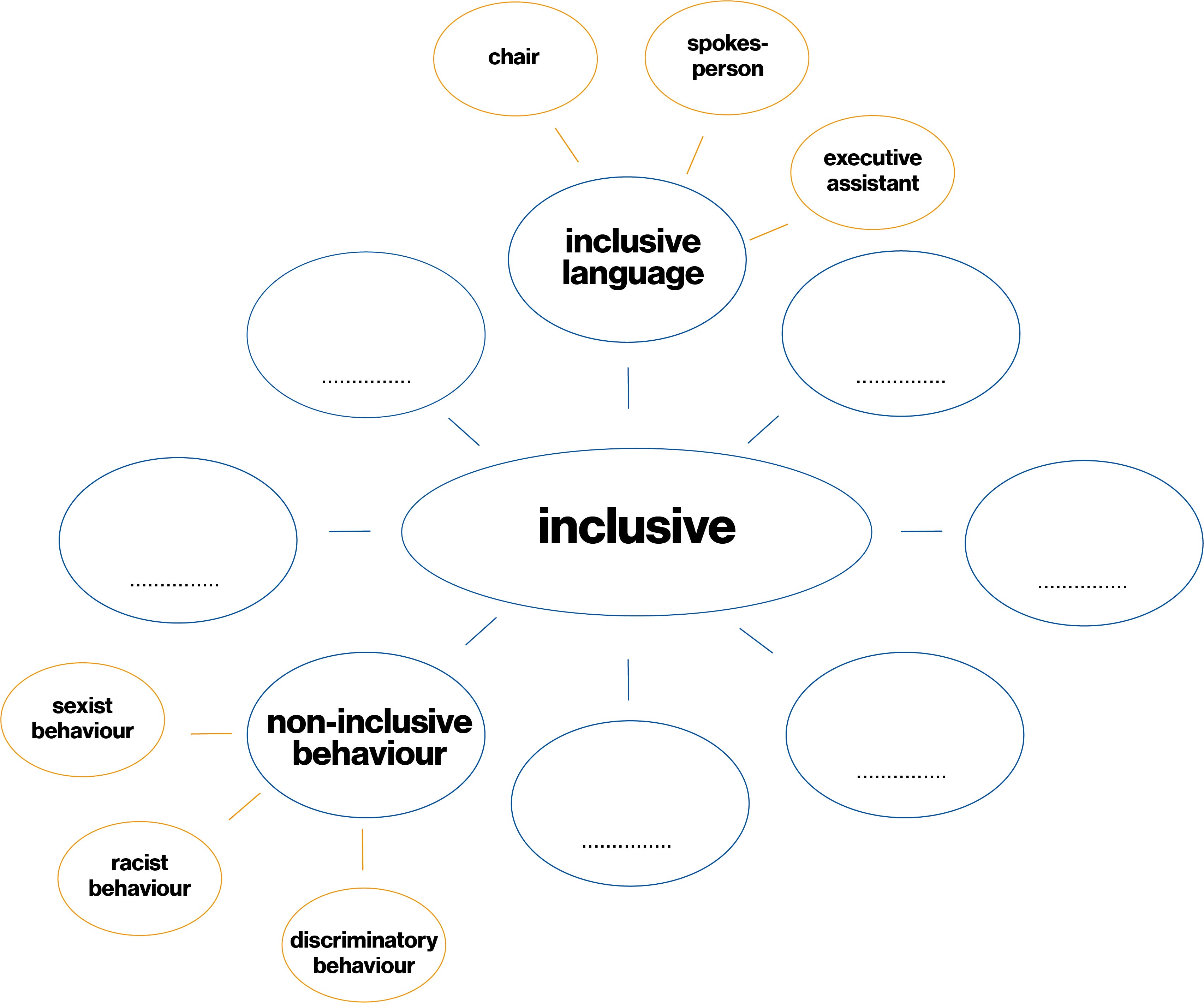Feeling that you belong somewhere is a basic human need. Nobody likes to feel like an outsider. In organizations that are truly diversevielfältig, verschiedenartigdiverse — across line of ageAltersgrenzelines of age, class, disabilityBehinderungdisability, gender, race, sexual orientation and world views — creating a sense of belonging can be trickyschwierigtricky. It’s definitely harder to to achieve sth.etw. erreichenachieve than in a team where everyone has similar backgrounds. It requires action on both the company and the individual level.
Many organizations talk about their diversity and inclusivity initiatives. Often, they focus on hiring diverse teams — on getting the minority numbers up, for instance — but they may forget to promote inclusion on a on a day-to-day basisim Geschäftsalltagday-to-day basis. For diversity initiatives to work, every employee needs to take responsibility and make sure that everyone in the team feels included.
A diverse workforceBelegschaftworkforce is one in which everyone is welcome, but an inclusive working environmentArbeitsumfeldworking environment is one in which everyone feels welcome every day. Here, we present seven tips for creating such a welcoming situation and look at how the right language can help you become more inclusive.
Promoting inclusion in public
Make inclusion part of your core valuezentraler Wert, Grundwertcore values and to go public about sth.etw. publik machengo public about your commitmentVerpflichtungcommitment to it, especially if you are in a position of leadership.
Encouraging participation
Saying that inclusion is a core value won’t make it one. You need to encourage a culture in which everyone feels they can express their viewpoint and that it will be valued. If you have the chance, for instance, don’t let the same people dominate meetings. Also, help to create a culture in which everyone feels they can speak honestly without fear of reprisalRepressaliereprisals. This is especially important when someone needs to talk about sensitive issueThema, Sachverhaltissues.
Being supportive in private
If you notice that someone doesn’t seem to be comfortable doing sth.hier: etw. gern tuncomfortable speaking in public, don’t put that person on the spot in the meeting. Accept that the culture that your team has created may not be as inclusive as you thought. In private, show that the individual has your support and that you value their inputBeitrag/ Beiträgeinput. This is not something that is the soleausschließlichsole responsibility of the team leader. Everyone can help create a working environment that supports honest conversations.
Being respectful
The ideal working environment should be non-threatening to everyone. This means that when you do to take issue with sth.mit etw. nicht einverstanden seintake issue with someone’s work or contributions, you should be respectful. If you feel people are not showing respect, consider politely to call sb. outjmdn. zur Rede stellencalling them out.
Avoiding assumptions
It’s important to be to be mindful of sth.etw. bedenkenmindful of unconscious biasVoreingenommenheitbias within yourself and within the members of your team. This means that you should avoid making to make an assumption about sb.eine Vermutung über jmdn. anstellenassumptions about people based on stereotypes or on your past experience. For instance, don’t assume that people share personal interests because you believe they have a common background. Treat everyone as an individual, and not as part of a group. Don’t introduce or describe someone by their race, culture or disability. Instead, use small talk and ask questions to get to know people better, as uniqueeinzigartigunique individuals. It’s the best way to discover common interests that can lead to a stronger sense of belonging.
Using inclusive language
Becoming more conscious of how language to impact sb.sich auf jmdn. auswirkenimpacts others can also help prevent people from feeling like outsiders. Inclusive language is free from expressions that show biased, stereotyped or discriminatory views of individuals or groups of people. It should also be free of idioms, jargonFachsprachejargon and acronyms that other people may not understand or might even find offensivekränkendoffensive. If you feel someone is not using inclusive language, ask them to use different expressions.
Avoiding gender bias
Use gender-neutral or gender-inclusive terms, such as “chairVorsitzende(r), vorsitzende Personchair” instead of “chairman” or “chairwoman”. You can also avoid gender bias in your use of pronounPronomenpronouns, for example by using “they” to refer to a singular subject or by using a plural subject, instead of the traditional singular “he”. Most importantly, you should use language that people want you to use. For example, gender-nonconforming people may wish to be referred to as “they”/“them” rather than the gender-specific “he”/“him” or “she”/“her”. Being more inclusive means respecting such wishes.
Essential phrases
Promoting inclusion in public
- Inclusion is a key part of the fabricGewebe, Stoff; hier: Gefüge, Strukturfabric of our team.
- Everyone should feel that they belong in this team.
- We need to make everyone feel included.
Encouraging participation
- Would you like to add something, Carol?
- It would be good to hear your views, too.
- I really want to hear your perspective on…
Being supportive in private
- I know you have a lot to offer.
- How can I help you feel more to feel comfortable doing sth.hier: etw. gern tuncomfortable talking in the group?
- I think everyone would really value your perspective on…
Being respectful
- May I say something?
- I think we’re to talk over each otherden anderen/ die andere nicht ausreden lassentalking over each other.
- Let’s give… a chance to speak.
Avoiding assumptionVermutung, Annahmeassumptions by asking questions
- How did you end up in this city?
- What do you like about living here?
- Are you interested in… ?
Using inclusive language
- Could we please try to avoid jargonFachsprachejargon that others may not understand?
- I’m not sure everyone is clear what that means.
- We don’t use the term…, as it has negative connotationBeiklang, Assoziationconnotations.
Avoiding gender biasVoreingenommenheitbias
- How would you like us to refer to you?
- Do you have a preferred term?
- I’d rather be referred to as “they”.
Build your vocabulary!
Are you doing enough to promote an inclusive workplace? Start a mind mapGedanken(land)kartemind map of the different ways that people can feel like an outsider — or an insider. Write one key word in the middle of a piece of paper, then add vocabulary that you think will be useful around it.

Neugierig auf mehr?
Dann nutzen Sie die Möglichkeit und stellen Sie sich Ihr optimales Abo ganz nach Ihren Wünschen zusammen.



